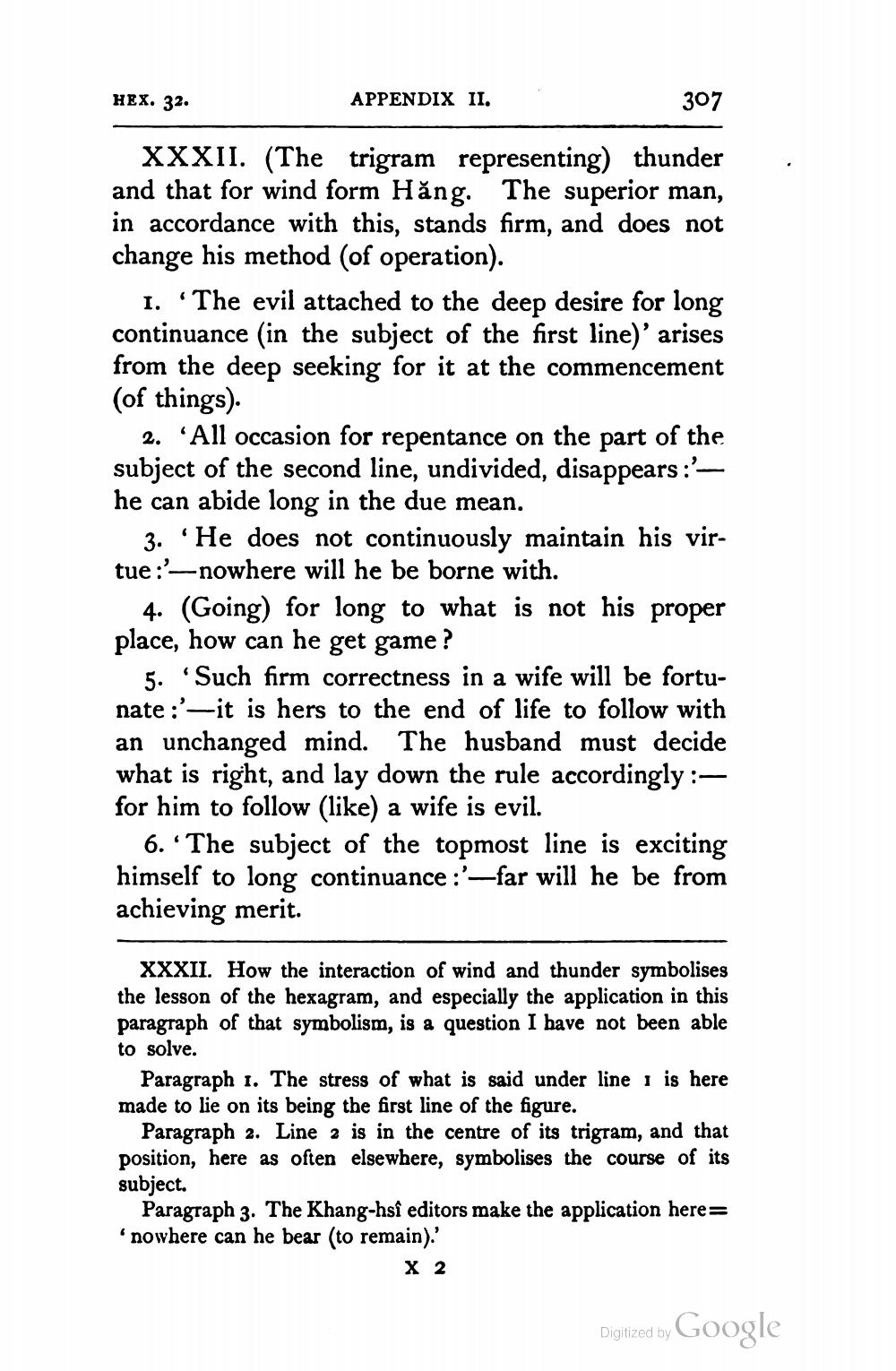________________
HEX. 32.
APPENDIX II.
307
XXXII. (The trigram representing) thunder and that for wind form Hăng. The superior man, in accordance with this, stands firm, and does not change his method (of operation).
1. “The evil attached to the deep desire for long continuance (in the subject of the first line)' arises from the deep seeking for it at the commencement (of things).
2. 'All occasion for repentance on the part of the subject of the second line, undivided, disappears:'he can abide long in the due mean.
3. 'He does not continuously maintain his virtue:'-nowhere will he be borne with
4. (Going) for long to what is not his proper place, how can he get game ?
5. Such firm correctness in a wife will be fortunate:'-it is hers to the end of life to follow with an unchanged mind. The husband must decide what is right, and lay down the rule accordingly:for him to follow (like) a wife is evil.
6. The subject of the topmost line is exciting himself to long continuance :'-far will he be from achieving merit.
XXXII. How the interaction of wind and thunder symbolises the lesson of the hexagram, and especially the application in this paragraph of that symbolism, is a question I have not been able to solve.
Paragraph 1. The stress of what is said under line 1 is here made to lie on its being the first line of the figure.
Paragraph 2. Line 2 is in the centre of its trigram, and that position, here as often elsewhere, symbolises the course of its subject.
Paragraph 3. The Khang-hsî editors make the application here= nowhere can he bear (to remain).'
x 2
Digitized by Google




